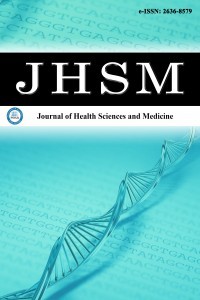1.
Liu Y, Sha J, Meng C, Zhu D. Mechanism of lower airway hyperresponsiveness induced by allergic rhinitis. J Immunol Res. 2022;2022:4351345. doi:10.1155/2022/4351345
2.
Wang CS, Wang XD, Zhang L. An introduction to allergic rhinitis and its impact on asthma (ARIA) guidelines-2016 revision. Zhonghua Er Bi Yan Hou Tou Jing Wai Ke Za Zhi. 2018;53(10):798-800. doi:10.3760/cma.j.issn.1673-0860.2018.10.017
3.
Katelaris CH, Lee BW, Potter PC, et al. Prevalence and diversity of allergic rhinitis in regions of the world beyond Europe and North America. Clin Exp Allergy. 2012;42(2):186-207. doi:10. 1111/j.1365-2222.2011.03891.x
4.
Tidke M, Borghare PT, Pardhekar P, Nasre Y, Gomase K, Chaudhary M. Recent advances in allergic rhinitis: a narrative review. Cureus. 2024;16(9):e68607. doi:10.7759/cureus.68607
5.
Moran EM, Foley R, Powell FC. Demodex and rosacea revisited. Clin Dermatol. 2017;35(2):195-200. doi:10.1016/j.clindermatol. 2016.10.014
6.
Palopoli MF, Fergus DJ, Minot S, et al. Global divergence of the human follicle mite Demodex folliculorum: persistent associations between host ancestry and mite lineages. Proc Natl Acad Sci USA. 2015;112(52):15958-63. doi:10.1073/pnas.1512609112
7.
Arli C, Ozsan M, Gurkan E, Aycan Kaya O, Kokacya S. The incidence of Demodex folliculorum in the combination of allergic rhinitis and diabetes mellitus. Iran J Parasitol. 2019;14(3):459-464.
8.
Yengil E, Cevik C, Kaya OA, Taner M, Akkoca AN, Ozer C. Relationship between Demodex folliculorum and allergic rhinitis in adults. Acta Med Mediterr. 2014;30:27-31.
9.
Canonica GW, Mullol J, Pradalier A, Didier A. Patient perceptions of allergic rhinitis and quality of life: findings from a survey conducted in europe and the United States. World Allergy Organ J. 2008;1(9):138-44. doi:10.1097/WOX.0b013e3181865faf
10.
Bevins CL, Liu FT. Rosacea: skin innate immunity gone awry? Nat Med. 2007;13(8):904-906. doi:10.1038/nm0807-904
11.
Aktaş Karabay E, Aksu Çerman A. Demodex folliculorum infestations in common facial dermatoses: acne vulgaris, rosacea, seborrheic dermatitis. An Bras Dermatol. 2020;95(2):187-193. doi:10.1016/j.abd.2019.08.023
12.
Sharma YK, Gupta A. Human Demodex mite: the versatile mite of dermatological importance. Indian J Dermatol. 2014;59(3):302. doi:10.4103/0019-5154.131416
13.
Rusiecka-Ziólkowska J, Nokiel M, Fleischer M. Demodex-an old pathogen or a new one? Adv Clin Exp Med. 2014;23(2):295-298. doi:10.17219/acem/37081
14.
Liu J, Sheha H, Tseng SC. Pathogenic role of Demodex mites in blepharitis. Curr Opin Allergy Clin Immunol. 2010;10(5):505-10. doi:10.1097/ACI.0b013e32833df9f4

